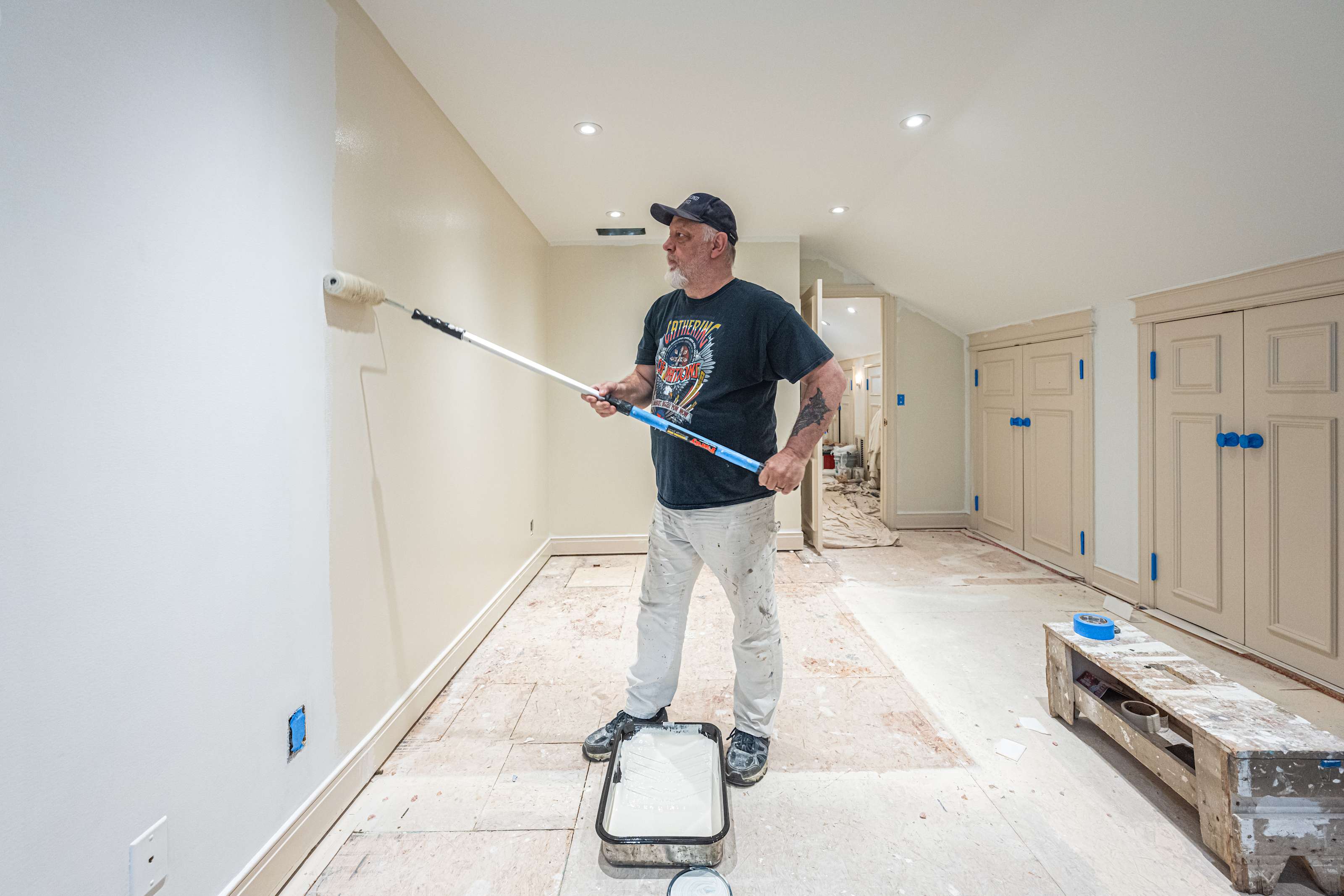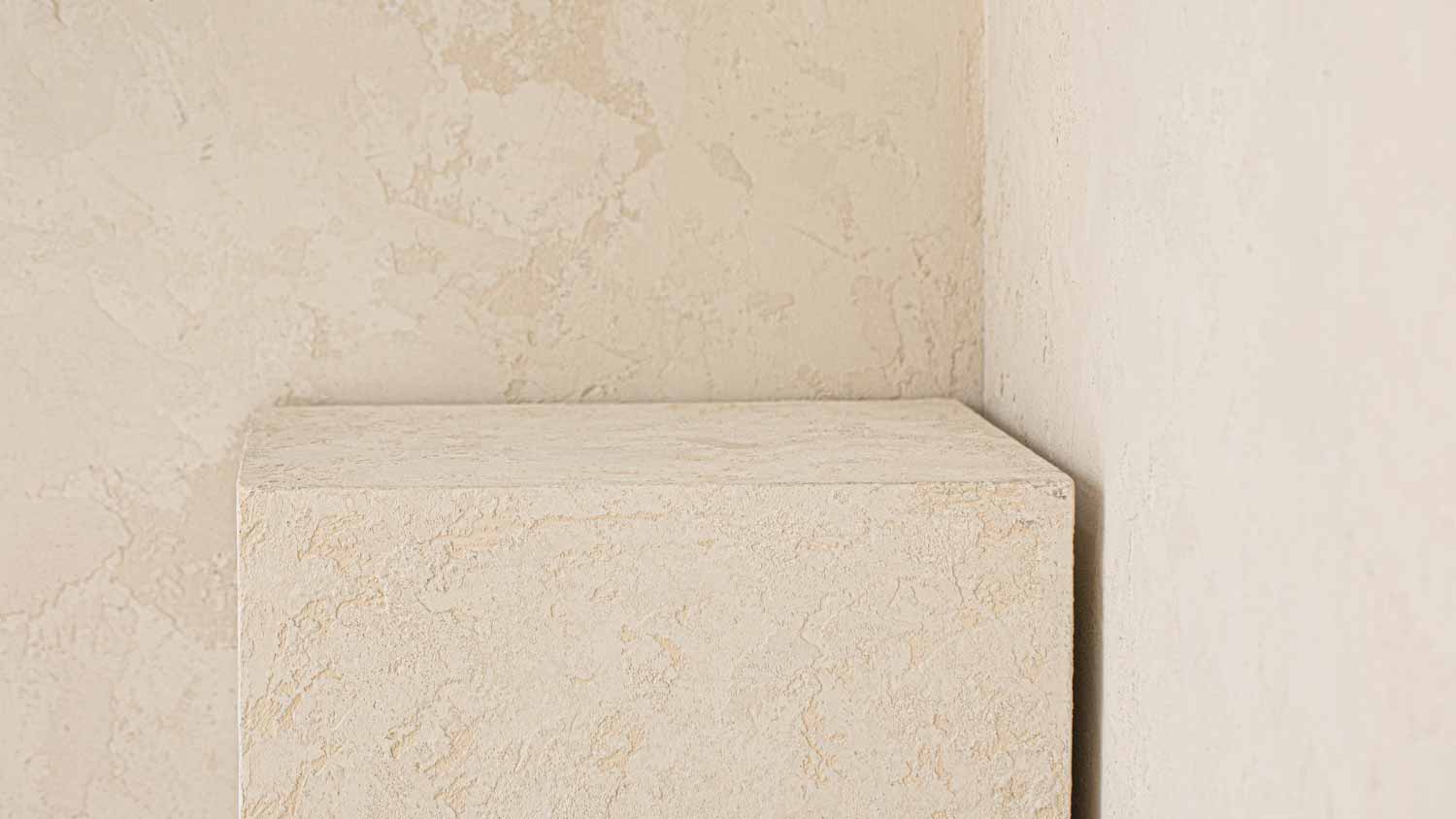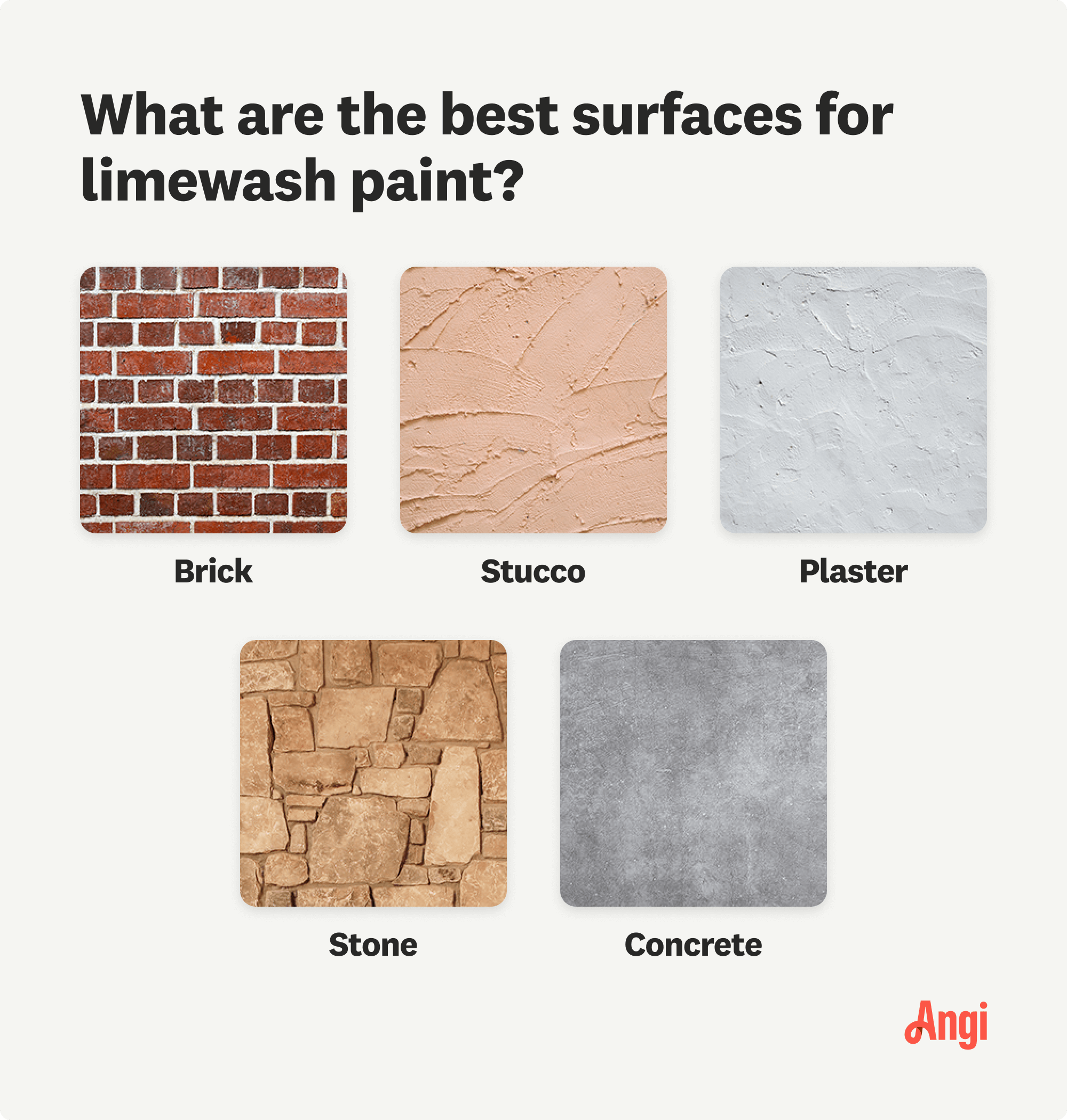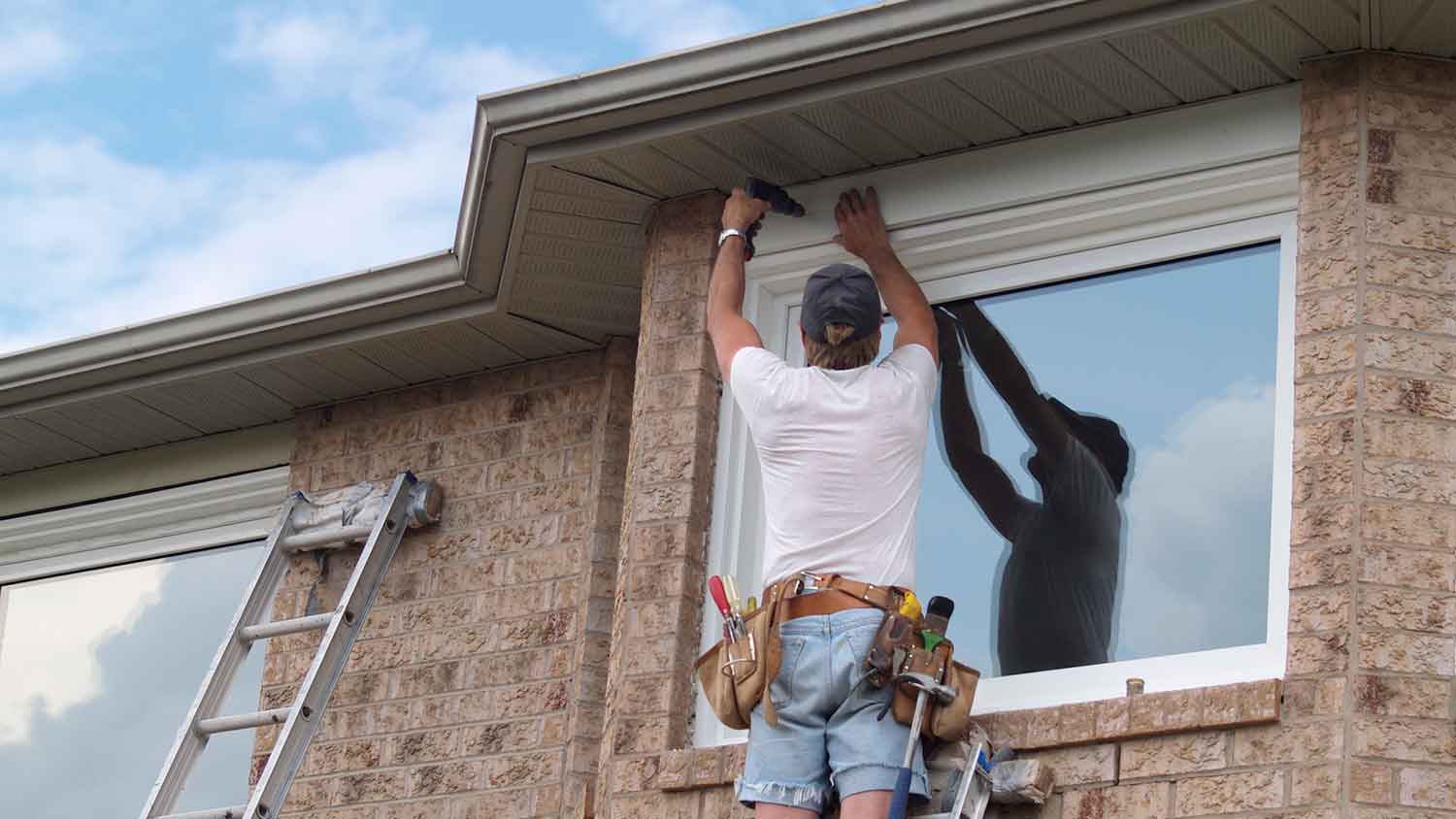
How much does it cost to paint a room? Learn what you’ll pay to give your space a makeover, depending on room size, paint type, the pro you hire, and more.
Interior painting costs depend on your project and location. Check with a local pro for your specific job.
The cost to limewash interior walls is between $1.50 and $6 per square foot.
The main factor affecting the price is the size of your room.
Cost is also influenced by prep work, materials, and the number of coats.
You can limewash your own walls, but you should hire a painter to get a flawless finish on a large project.
The average cost to limewash interior walls is $1,950, though it can range from as low as $150 to as high as $6,000 depending on factors like wall size and prep work. This breaks down to $1.50 to $6 per square foot.
Limewashing is a centuries-old technique that involves coating your walls with a mixture of water, lime, and optional pigment for color. It results in a chalky and textured surface that has antibacterial properties. You can limewash your walls to get a rustic, antique-looking interior, and understanding the cost factors can help you budget for the project, whether you choose to DIY or hire a professional.

You can limewash breathable surfaces like drywall, plaster, brick, stone, stucco, and concrete. Limewashing is more expensive than a standard paint job because it requires more labor. The cost depends on several factors, such as the wall's size, the materials you choose, and the prep work.
The cost to limewash interior walls is $1.50 to $6 per square foot. Naturally, if you’re working with larger surface areas, the price will increase. Limewashing multiple different rooms that total 1,000 square feet, for example, can cost up to $6,000. But limewashing decorative features (like accent walls, arches, and columns) will be less—possibly as low as $150.
| Wall Size (Square Feet) | Average Cost to Limewash |
|---|---|
| 100 | $150–$600 |
| 250 | $375–$1,500 |
| 500 | $750–$3,000 |
| 750 | $1,125–$4,500 |
| 1,000 | $1,500–$6,000 |
| 1,500 | $2,250–$9,000 |

If you’re applying limewash to a porous surface like brick or stone, prep work will be minimal—simply wipe it down to remove dirt. More preparation is needed when limewashing drywall or a previously painted surface. That’s because the limewash will not adhere properly without a primer. Expect to pay $10 to $20 per gallon for most primers.
You will pay a premium to find a local interior painter who offers limewashing services. Keep in mind that limewash is a labor-intensive process, so you’ll likely pay more than for a standard paint job. House painters often charge at least $75 per hour for limewashing.
Primer is needed when limewashing drywall or previously painted surfaces, which adds additional expenses. The cost of limewashing will also increase for other necessary preparations like sanding drywall, filling holes, mending cracks, and repairing dents.
| Prep Work | Average Cost |
|---|---|
| Priming walls | $20–$100 |
| Filling holes | $20–$20 |
| Fixing nail pops | $10–$60 |
| Mending cracks | $60–$400 |
| Repairing dents | $20–$150 |
The cost to limewash interior walls also depends on the number of coats needed. It can take several hours to apply a single coat to a mid-sized room, and most walls need two coats (and possibly primer) to achieve the desired finish. If you’re working with a saturated pigment, the walls might need three coats.
Instead of using limewash in its natural off-white hue, some homeowners add pigment to alter the color. These pigments often come in earthy, muted tones that contribute to the rustic appearance of limewash.
The price depends on the brand, the color intensity, and the type of pigment used. Opting for custom colors instead of pre-tinted pigments will raise costs. Saturated hues tend to be more expensive because they require a greater amount of pigment and additional coats.
You can expect to pay between $25 and $100 per gallon for the limewash itself. Some professionals buy lime for $5 to $15 per bag, then add water to make their own limewash.
In addition to the limewash paint, you’ll need other materials to complete the project. These include a ladder, drop cloth, brush, and primer (if limewashing certain surfaces like drywall). The price depends on what you already own, but it can be upwards of $300.
The quality of your materials also matters. For example, high-quality limewash paint results in increased durability and smoother appearance, but it can raise the price of your project.
| Materials | Cost |
|---|---|
| Limewash paint | $25–$600 |
| Primer (if needed) | $20–$100 |
| Ladder | $75–$150 |
| Drop cloth | $20 |
| Brush | $10–$40 |
Limewashed surfaces require minimal upkeep, but homeowners should factor in a few ongoing costs.
Regular maintenance involves wiping limewashed surfaces with a damp microfiber duster, which often costs less than $15. To avoid damaging the finish, don’t scrub limewash or use harsh chemicals.
Interior walls are subject to wear and tear, so you might refresh your limewashed walls every several years. Touch-ups are especially important in areas with high traffic and high moisture.
To do this, brush off dust and apply a fresh coat of limewash paint. The cost depends on the amount of paint needed, as well as necessary materials like brushes. Hiring a professional for touch-ups will raise the price. If you used a custom pigment for your limewash, you’ll also need to buy this (though keeping extra pigment on hand can help for color matching purposes).
Limewashing is not the same as painting, which is a much more DIY-friendly project for homeowners. Limewashing is more labor-intensive because of the prep work and application technique involved. While you can save money on labor by doing it yourself, you won’t guarantee the same results you would get by hiring a pro interior painter near you to do the work for you.
At first, limewashing seems similar to painting, but it requires a different technique and a lot more patience. Here’s why it’s better to hire a limewashing pro instead:
They know how to prep the walls, including priming and making repairs to ensure a smooth surface.
They have the proper application technique for a streak-free finish, especially with more pigment-heavy limewash.
They can finish the work faster and more efficiently, even with longer curing times.
Their work is often backed by warranty.
Limewashing is more DIY-friendly for smaller projects. Here’s what DIYers need to know:
It’s easier for homeowners to tackle limewashing for small rooms, accent walls, or stone features, such as a fireplace surround.
The surfaces must be cleaned, sanded, and primed for the limewash to adhere properly.
Lighter limewash colors will be easier to apply without visible streaks.
The project timeline must include time for drying, curing, and touch-ups.
Whether you’re hiring a pro or attempting the DIY route, you can reduce the costs of limewashing interior walls with these tips.
Scale down. You don’t need to limewash an entire room to reap the benefits. Limewashing an accent wall or decorative feature (such as a fireplace) can add visual appeal with a smaller price tag.
Prep the walls yourself. Do you need to fix nail pops or sand uneven surfaces? Completing prep work before hiring a professional will save money.
Borrow materials. If you’re completing the limewash project yourself, consider asking a friend or family member to borrow their ladder, drop cloths, or other materials.
Use light tints. Custom-tinted limewash is more expensive, and it also requires more coats. Choosing a limewash tint that’s similar to its natural white shade will cut costs.
Choose surfaces that don’t need priming. If you limewash a porous surface like brick or concrete, you don’t need primer, which can save money.
Discuss the scope of the project, including size and surface type, to confirm how much prep work and priming are required.
Consider your limewash choices, including pigment, colors/tints, and the number of coats necessary to achieve your desired look.
Confirm the proposed timeline, including drying and curing.
Home is the most important place on earth, which is why Angi has helped more than 150 million homeowners transform their houses into homes they adore. To help homeowners with their next project, Angi provides readers with the most accurate cost data and upholds strict editorial standards. We extensively research project costs to develop the pricing data you see, so you can make the best decisions for you and your home. We rely on reputable sources, including the U.S. Bureau of Labor Statistics, academic journals, market studies, and interviews with industry experts—all to ensure our prices reflect real-world projects.
Want to help us improve our cost data? Send us a recent project quote to [email protected]. Quotes and personal information will not be shared publicly.
From average costs to expert advice, get all the answers you need to get your job done.

How much does it cost to paint a room? Learn what you’ll pay to give your space a makeover, depending on room size, paint type, the pro you hire, and more.

Discover the cost to install window trim. Learn about price factors, labor, materials, and tips to save on your window trim installation project.

The cost to paint the interior of a house in Boston, MA depends on size, layout, type of surface, and more. Learn what factors can influence your total in this guide.

Looking for painted fireplace ideas? Check out these eight top-notch paint colors to help you pick the perfect shade for your fireplace renovation.

Tired of your neutral-colored concrete countertops? Paint them for a fun DIY project that will totally transform your kitchen.

When a ceiling has stains, you can follow a few steps for how to paint a water-damaged ceiling yourself—or a pro can fix the damage and paint for you, too.